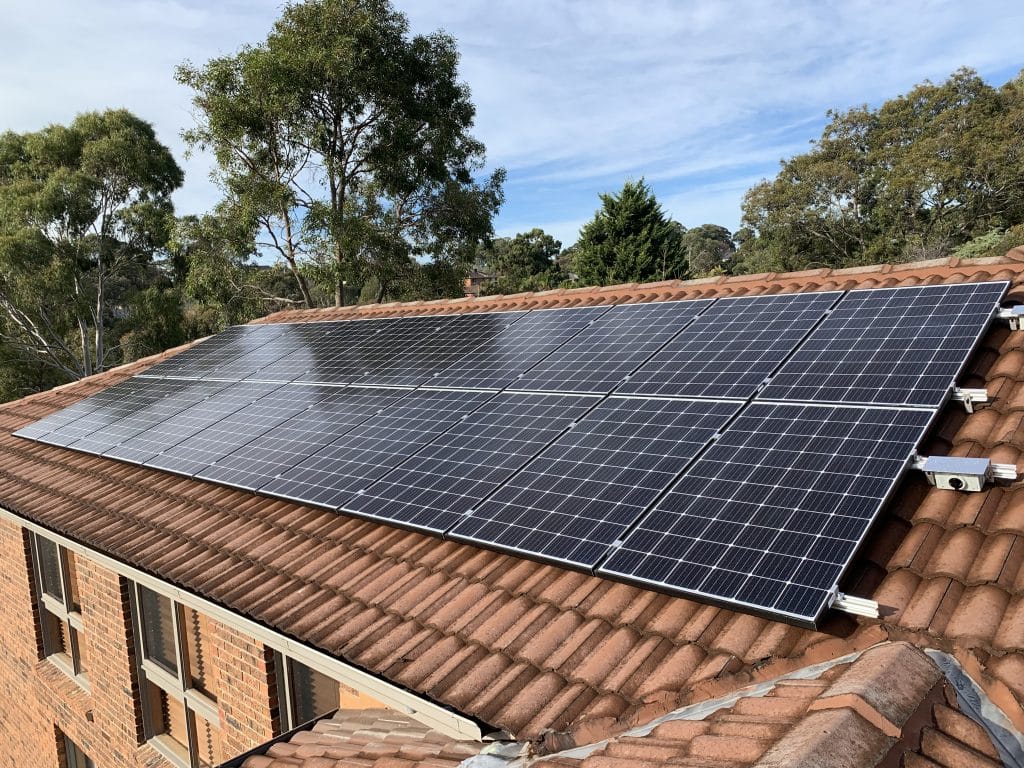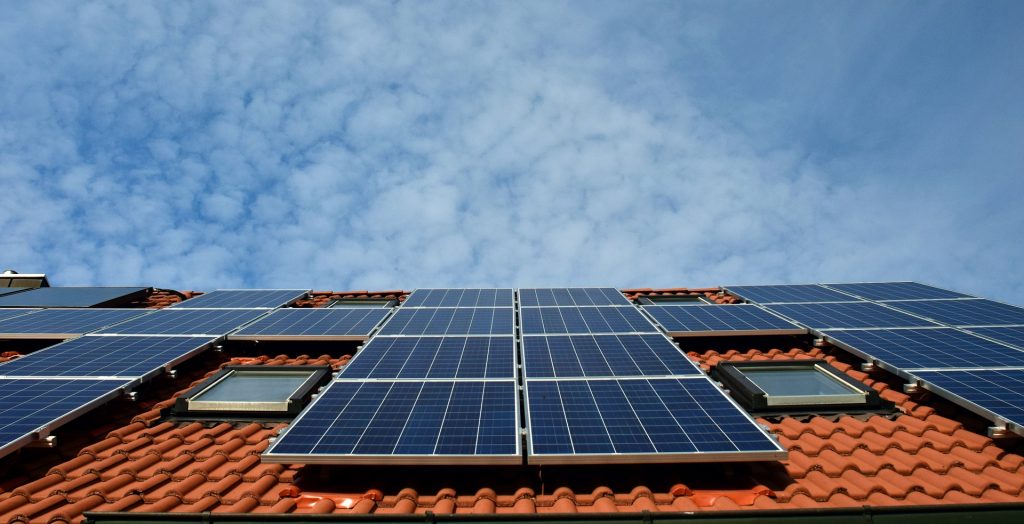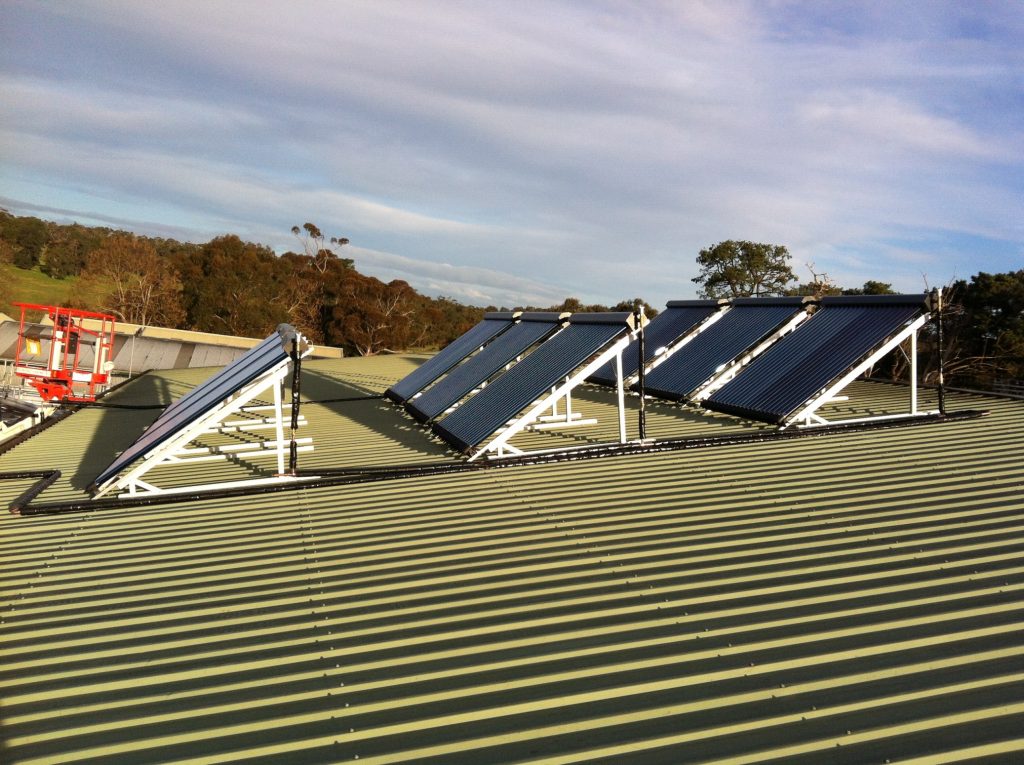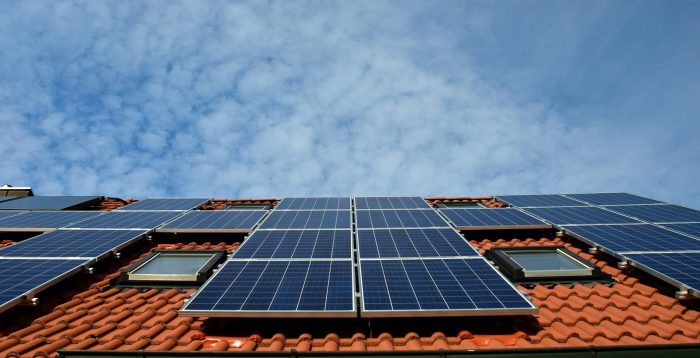
Is optimising the performance of your solar panels a priority?
One of the most important components of system upkeep is keeping the batteries in good condition.
Without proper maintenance, the batteries in your solar panel system will gradually deteriorate, severely affecting the system’s efficiency and lifespan.
But don’t panic, since with just a few easy measures; you can keep your solar panel system’s batteries functioning at peak efficiency all the time.
Keeping your solar panel system in good working order for many years requires regular inspection, testing, charging, and troubleshooting of its batteries.
Guidelines for Preventative Care of Solar Power System Batteries
The lifespan of your solar batteries can be affected by several factors, such as the depth of their discharge and the temperature at which they are stored.
However, sulfation is by far the most common reason batteries die.
Sulfation happens when sulphur crystals start to grow on the lead plates of a battery.
These sulphur crystals serve to halt any chemical reactions.
When a battery’s electrolyte level or charge is low, this happens, and the battery becomes flooded.
Since sulfation is the most common reason for solar batteries to fail, knowing how to detect and prevent it is crucial. Here are three tools that can be useful:
- A hydrometer that adjusts for temperature
- Digital voltmeter and bottled, purified water
Inspecting The Fluid Level Of Your Battery
It is only possible to verify the fluid level in unsealed batteries. To begin, remove the cover from your battery and give it a cursory inspection. The next step is to fill it with distilled water until no metal traces remain inside.
If you pour too much water into your battery, it could leak. Fortunately, the electrolyte level in most batteries can be seen through a fill line.
Determining How Much Power Is Left In Your Battery
You need to know your battery’s charging voltages and specific gravity to calculate its discharge depth.
A digital voltmeter can precisely measure the voltages at which you charge your battery. The specific gravity and depth of discharge of your battery can be calculated with this data.
Sulfation can be avoided with this knowledge.
However, the reading on many batteries’ or controllers’ “charge completion” indicators can be off. They also might need to let you know if they are charged.
They may instead sound an alarm when they are close to being fully charged.
A hydrometer that considers temperature will give you a more reliable reading. The battery’s full charge status is determined by this instrument’s readings of individual cell voltages.
Cleaning Solar Batteries
Regular battery cleaning is another important part of keeping your solar batteries in good working order. For instance, you can use a combination of distilled water and baking soda as a cleaning solution.
Use a battery terminal cleaner brush to scrub the contacts on your battery.
Battery terminals should be cleaned with water and sealed or greased with high-temperature grease (like WD-40).
Batteries in solar panels
should be cleaned twice yearly at the very least to ensure reliable renewable energy delivery.
How Many Different Solar Batteries Are There?
Lithium-ion, Lead-acid, nickel-cadmium, and flow batteries are the four most common types of batteries used to store solar energy.
We should investigate each one in detail.
Lead-Acid
This solar battery design predates all others. It has a long history, which has allowed it to progress alongside renewable energy sources.
There are two distinct varieties of lead-acid solar batteries.
When fully charged, sealed lead acid batteries emit significantly less harmful gas hydrogen sulphide into the air than conventional lead acid batteries.
We also provide flooded lead acid batteries as an alternative. This is analogous to a standard automobile battery but on a larger scale.
In comparison to alternative storage choices, lead-acid solar batteries have a shorter lifespan and a lower depth of discharge.
Additionally, they need routine upkeep. That’s why lead-acid batteries are often the least expensive out of those four choices.
As most experts recommend, lead-acid batteries shouldn’t be discharged further than 50%. This is because the battery’s lifespan could be shortened if it’s discharged below that threshold.
Lithium-Ion
Compared to lead-acid batteries, which have been around for decades, this one can be considered “the new kid on the block.”
It has been upgraded with battery technology advancements, which are essential for electric vehicles.
Homeowners are increasingly turning to lithium-ion solar batteries. Three factors contribute to this:
- It’s because they live longer.
- They’re low-maintenance on your part.
- When compared to lead-acid batteries, their weight and size are significantly reduced.
In addition to these qualities, these batteries offer a greater useable capacity because they can withstand 80% or more deep discharges.
However, if not installed correctly, lithium-ion batteries present the risk of thermal runaway, which means they can catch fire.
Flow Batteries

The flow battery is another relatively recent innovation in solar battery technology.
Despite being a relatively new storage technology that still needs upgrades, flow batteries are gaining popularity for a few reasons.
- Its output is at full capacity. That means you can tap into 100% of your stored energy.
- Unlike the nickel-cadmium batteries we’ll discuss, flow batteries pose no health risks to users. The reason for this is that they are hygroscopic.
The disadvantages of flow batteries are next.
- The technology behind it is still maturing, but it already costs more than competing solutions.
- Its low storage capacity causes it to take up more room.
Nickel-Cadmium
Nickel-cadmium batteries (also known as “nickel batteries” and “Ni-Cd”) have been around for a while as a proven and proven alternative to other battery technologies.
Their ability to function in high heat without the need for sophisticated battery management systems has made them famous. That’s why industrial and institutional endeavours favour them.
One thing to remember is that nickel-based battery technology is dated. Moreover, they have been outlawed in several nations due to their extreme toxicity.
Common Solar Battery Issues
The following are the most common issues raised by solar battery owners. It’s possible that you won’t encounter any of these issues when using a solar battery, but rest assured that we’ve thought of everything that may go wrong.
The Battery Runs Out Soon
Although solar batteries provide a lot of energy, they lose their charge faster than conventional batteries. So the drainage may be the result of an underlying issue.
If you haven’t recharged it in a while or if the battery’s controller is malfunctioning, it will drain more quickly than usual.
Since every battery eventually dies, the best way to avoid this issue is never to store a depleted battery. However, it would help if you never had a charge of 0% or less, as this might lead to serious internal damage.
Knowing when to drain and recharge your solar batteries can maximise their useful life and keep you from having to drop hundreds of dollars on new ones too soon.
It’s also possible that other factors include:
- The battery capacity may be unrealistic.
- Battery life is decreasing.
- A short circuit can occur during battery installation.
- Finally, the electricity demand is more than anticipated.
The Battery Is Faulty Sometimes
This often occurs when the battery has been completely depleted and has been sitting dormant for some time. Charging the batteries directly from the solar system is a hassle. Now is the time to verify the power of each battery.
Verify the voltages, identify the battery with the lowest reading, and charge it fully. The battery packs should also have a battery balancer installed. As a result, your battery will be safeguarded and guaranteed to last much longer.
Problems With Solar Batteries Draining Too Fast
The load consumes the battery’s power when the two are connected. Consequently, this causes the battery to drain.
When a battery loses all its charges, it is called a discharge. A higher rate of battery drain occurs when a larger current is drawn. When a battery is discharged, the cell voltage decreases as well.
When the cell voltage drops below a predetermined level, the over-charging safeguard cuts power to the battery.
In most cases, protection against over-discharge occurs before a full cell discharge has occurred. However, if the load’s power consumption is extremely high, this will occur below the level that would activate the short circuit protection.
To prevent an over-discharge or a short circuit, follow these steps:
- A programmable electronic load is required to change the resistance.
- You will need a programmable power supply to check the overcharge protection.
- Battery V722 or V44, please.
- Determine how to link the battery’s output to the controllable load.
Solar Charge Controller Not Charging – Battery Maintenance
Even the most cutting-edge solar battery technology could fail to charge under certain conditions. Unfortunately, this is a typical problem, and the solution is straightforward. If you follow these steps, you can get out of here.
Here are some things you might do if you notice that the solar controller is not charging:
- There’s probably some open circuit or device damage here. You have two options for fixing this: buying a new one or fixing the one you have.
- If you see that the solar battery isn’t getting enough light, move it somewhere where it can get plenty of exposure to the sun.
- Raise the booster’s setting and connect a series of photovoltaic panels for use in cases of voltage discrepancy or processing technique failure.
The Solar Battery Overheats
When the cell is rapidly charged or drained, this occurs. The heat generated by the chemical reactions during this process might be dangerously high. As a result, the solar battery can overheat if it is used too frequently.
Overcharging causes a temperature increase; thus, when this happens, charging must be slowed down or stopped immediately.
Stopping the battery charger and letting it sit idle for a few hours is a good option.
Weather Factors
Conditions outside also play a significant effect in how quickly a battery charges. An overcast day, for example, might be a major setback when trying to charge a solar battery.
In such a circumstance, the battery should be charged and stored in advance (a few hours or the day before).
This way, even on a cloudy day, you can always have enough solar power to charge your battery.
Typical Solar Panel Problems
Here are some of the most common solar panel defects preventing batteries from charging.
Affected By Hot Spot Damage
When a solar panel actively collects energy, a portion is always in the shade. As a result, the covered area will be warmer than the surrounding area, developing hotspots.
The battery’s solder joint, the grid line, and the solar module are all damaged once the hot spot reaches a specific temperature.
Statistics show that hot spot damage significantly reduces the generation rate of solar panels, shortening the plant’s lifespan by 10%.

It is of the utmost importance in these situations to protect vulnerable zones. Several options exist for avoiding this issue, including:
- Upkeep the apparatus regularly.
- Selecting solar panels equipped with corner drains will reduce the likelihood of dirt accumulation.
Selecting high-quality solar panels with integrated drainage corners and minimising shadows is the best way to combat the damage caused by hot spots. This way, a photovoltaic system’s full potential can be realised, and no such accidents will occur.
The Issue With Cracks
When even a little break in a cell greatly accelerates the cell power decay process and negatively affects the solar panel cell life, we have a problem.
The cracking issue may worsen if the cell is under constant mechanical control. This could cause a hot spot or open circuit failure.
Invisible to human sight is the internal variables that contribute to cracking difficulties.
The power station’s ability to generate electricity is severely hampered due to this damage. In addition, the hidden break can greatly affect power generation, which is not visible to the naked eye.
There are three techniques to prevent the cracking problem:
- Panels should never be cleaned with a hose. It will help if you exercise extra caution when handling solar panels because the glass is very susceptible to thermal shock. It’s also not a good idea to clean the panel when the sun is directly overhead. Because of this, the glass in the solar panels could break. Instead of using a hose, hire a cleaning service to care for the panels.
- A heavier object, such as a cricket ball or a Frisbee, can shatter the solar glass. Trees should be trimmed around the solar array since falling branches can damage the panels.
- When planning for a solar panel or solar battery installation, remember that bad weather might cause harm.
Problems With Technology:
Here are the three most important factors defining a solar PV battery’s performance and price. The three most important indicators are capacity (or energy density), stability, and efficiency.
The Density Of Stored Energy
The energy density or capacity of the PV battery system is one of the main obstacles.
A PV module is the substrate for the battery’s anode, cathode, and separator in the typical implementation of an integrated system’s planar architecture.
Materials having a high specific capacity can be used in these situations. For example, the typical energy density of Silicon-NMC batteries is 400 Wh kg. Therefore, the PV industry relies heavily on silicon.
Productivity In General
Three-electrode PV battery systems in the lab have an overall efficiency of 7.61 per cent. Efficiency is 0.08 per cent for a two-electrode integrated system and 3.2% for a redox flow system.
These efficiency gains are insufficient to make a PV battery-integrated system economically viable. The overall efficiency is a function of two factors: the efficiency with which the PV is converted to electricity and the efficiency with which the battery stores that electricity.
The integrated system’s adaptation is not a carbon replica of spate cells or solar batteries.
To this end, it is essential to maximise the efficiency of both the battery chemistry and the energy storage system.
The kind of battery electrode and the electrolyte are directly related to the battery’s storage efficiency.
Changes in the solar battery’s reactivity during discharge and recharge are also correlated with increases in storage efficiency.
Stability
A new energy technology also has to deal with the issue of stability. The primary factors to consider are the photostability, environmental, and electrochemical stability of the PV battery.
Choosing the right material is crucial to ensuring stability. Battery and PV stability improvements are usually a boon to the integrated PV system.
The heat response is a stability-related issue. The solar component generates a lot of heat. Thus the thermal response is a big deal.
Using battery chemistries that strongly tolerate higher temperatures can fix this stability problem. But, again, using solid electrolytes is the recommended course of action here.
Conclusion
The steps for maintaining the solar panel system’s batteries are the most crucial information presented here. Routine maintenance entails checking, testing, charging, and fixing any issues that may arise. Since sulfation is the leading cause of solar battery failure, detection and prevention methods are crucial.
A temperature-compensating hydrometer, a digital voltmeter, and bottled, filtered water are the three means by which sulfation can be detected and avoided.

Only unsealed batteries allow you to check the fluid level, and a digital voltmeter can tell you how much juice is still in the battery.
Many battery and controller “charge completion” indicators provide an inaccurate reading. The four most common solar batteries used to store solar energy are discussed in length in this article: lead-acid, lithium-ion, nickel-cadmium, and flow batteries.
While lithium-ion batteries have been improved, their predecessors, lead-acid batteries, have a longer lifespan and a lower depth of discharge.
Lithium-ion batteries have a higher usable capacity and can sustain severe discharges of 80% or more, while lead-acid batteries should not be depleted further than 50%.
Flow batteries are another cutting-edge development in solar-powered storage.
The pros and cons of flow batteries and nickel-cadmium batteries are the most relevant topics covered in this article.
While nickel-cadmium batteries have been available for a while, they have been banned due to their high toxicity.
Flow batteries, on the other hand, are becoming increasingly popular due to their full capacity output and lack of health dangers.
The battery may not last as long as expected, the battery capacity may be unrealistic, the battery life may be declining, a short circuit may develop during installation, and the electricity demand may be more than expected; these are all problems commonly seen with solar batteries.
It is inconvenient to use the solar panel array to charge the batteries directly. Each battery needs to be checked for power, and the one with the lowest reading should be fully charged.
Electronic loads that can be programmed to vary in resistance are necessary to prevent over-discharge and short circuits.
There must be an open circuit or broken component for the solar controller to fail to charge.
In the event that the solar battery isn’t receiving adequate sunlight, you should relocate it.
Overheating of the solar battery requires rapid reduction or cessation of charge.
Most importantly, this article describes the most typical problems with solar panels that prohibit batteries from being charged.
These include hot spot damage, which slows down solar panels’ output, and cracking, which hastens the degradation of solar cells’ output.
Regular care of the equipment, using solar panels with corner drains, and minimising shadows are all vital ways to avoid these problems.
Avoid cleaning solar panels while the sun is directly overhead, and use caution whenever working with them.
Trees should be cut around the solar array, and a cleaning agency should clean the panels.
Solar PV battery performance and cost depend on technological aspects like capacity, stability, and efficiency.
One of the biggest problems is the low energy density of stored energy and the total efficiency of 7.61% for three-electrode PV battery systems.
The efficiency of a PV battery-integrated system is based on the efficiency of both the PV and the battery when converting sunlight into electricity. Photostability, environmental, and electrochemical stability are other major considerations when it comes to stability. For this use, solid electrolytes are suggested.
Content Summary
- Proper maintenance is crucial to keep the batteries of your solar panel system working well.
- Deterioration of batteries can significantly reduce the efficiency and lifespan of the solar panel system.
- To maintain your solar panel system, regular inspection, testing, charging, and troubleshooting of its batteries are essential.
- The lifespan of solar batteries is affected by various factors, such as the depth of their discharge and the temperature at which they are stored.
- Sulfation is the most common reason for battery failure, which happens when sulphur crystals grow on the lead plates of a battery, halting any chemical reactions.
- Three useful tools to prevent sulfation include a hydrometer that adjusts for temperature, a digital voltmeter and bottled purified water.
- To verify the fluid level in unsealed batteries, the battery’s cover needs to be removed, and distilled water is added until no metal traces remain inside.
- A digital voltmeter can precisely measure the charging voltages of the battery, enabling you to calculate its specific gravity and depth of discharge.
- Regular battery cleaning is essential, and distilled water and baking soda are commonly used as a cleaning solutions.
- Lithium-ion, lead-acid, nickel-cadmium, and flow batteries are the four most common types of batteries used to store solar energy.
- Lead-acid solar batteries have two distinct varieties, and they have a shorter lifespan, lower depth of discharge and require routine upkeep, but they are less expensive than other options.
- Experts recommend that lead-acid batteries shouldn’t be discharged below 50% to maintain their lifespan.
- Lithium-ion batteries have a longer lifespan, are low-maintenance, and have a smaller size and weight than lead-acid batteries.
- Lithium-ion batteries can withstand more deep discharges than lead-acid batteries, but they pose the risk of thermal runaway if not installed correctly.
- Flow batteries offer a greater usable capacity and are hygroscopic, posing no health risks to users. However, they are still a new technology that needs upgrades and can be more expensive.
- Nickel-cadmium batteries are a popular option due to their longevity, low maintenance, and a high tolerance for deep discharges.
- Inspecting the temperature at which the hydrometer is used is crucial to get a more reliable reading.
- Sealed lead-acid batteries emit less harmful gas hydrogen sulphide into the air than conventional lead-acid batteries when fully charged.
- Battery terminals should be cleaned with water and sealed or greased with high-temperature grease.
- Solar panel batteries should be cleaned twice a year to ensure reliable renewable energy delivery.
- It is essential to know the battery’s charging voltages and specific gravity to calculate its discharge depth.
- Battery controllers’ charge completion indicators can be off, and a hydrometer that considers temperature gives a more reliable reading.
- If too much water is poured into the battery, it can leak, and electrolyte levels can be checked through a fill line in most batteries.
- Sulfation can be avoided by knowing the charging voltages and specific gravity of the battery.
- A battery terminal cleaner brush is used to scrub the contacts on the battery.
- To maintain your solar panel system, regular inspection, testing, charging, and troubleshooting of its batteries are essential.
- The temperature at which batteries are stored and depth of discharge can significantly affect the lifespan of solar batteries.
FAQs About Solar Panels
How Do You Maintain Solar Panel Batteries?
Battery terminals must be regularly cleaned with baking soda and distilled water using a battery terminal cleaner brush. Afterwards, rinse the terminals with water, ensure all connections are tight and coat the metal components with a commercial sealant or a high-temperature grease.
How Often Must Solar Batteries Be Replaced?
How Long Does a Solar Battery Last? Home solar battery units last anywhere between 5 and 15 years. So if you decide to install a solar battery today, it’s almost certain you’ll need a replacement in the future to match the 20- to 30-year lifespan of your solar power system.
Do Solar Batteries Need To Be Charged Before Use?
Solar batteries are manufactured to help us shift towards more sustainable energy by storing power from renewable sources. The primary fact is that you’re expected to always charge the batteries first with solar energy.
Do Solar Batteries Require Maintenance?
While lithium-ion battery technologies–the most common type of solar battery installed in homes and businesses–require very little or no maintenance, other types of batteries may require a trained technician to perform an annual check-up.
How Do You Protect Solar Batteries From Cold?
The first step to maximising your battery storage system for cold weather is to locate it in a place protected from the elements, such as a garage, house, or insulated building. Keeping the batteries in an insulated area maximises their performance, even if the temperatures outside are dropping.
